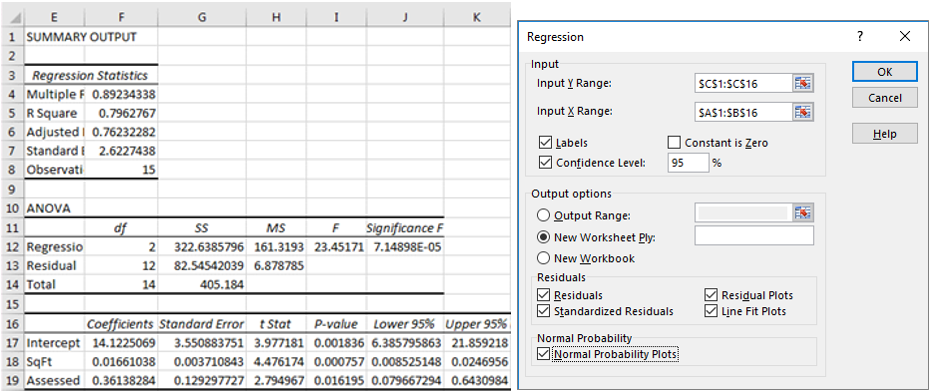

#Excel linear regression analysis pdf#
The regression equation is fundamentally changed as well ( PDF Notes).Almost no reason to ever use this option unless your data has a theoretical reason to pass through the origin.

Constant is Zero – Forces the X coefficient to capture more of the error.Confidence Level – Adds another confidence interval at selected confidence level.Labels being checked means you have a header at the top of your X and Y range.Īdditional options we haven’t checked are….If there were additional X variables, they would all have to be next to each other.Input X Range is the range of predictor variables (Spend).Input Y Range is where the response variable (Sales in our case) is located.If you’re using the CSV or XSLX file, you should mirror these options. Now that we can select different built-in analyses, we’ll launch the regression tool. You’ll then select the Analysis Toolpak and it should now be visible in the Data tab.Select the Add-ins section and go to Manage Excel Add-ins.Go to the Data tab, right-click and select Customize the Ribbon.If you don’t have the Toolpak (seen in the Data tab under the Analysis section), you may need to add the tool. Y = 1,383.471380 + 10.62219546 * X Doing Simple and Multiple Regression with Excel’s Data Analysis ToolsĮxcel makes it very easy to do linear regression using the Data Analytis Toolpak. We now have our simple linear regression equation. The intercept is the “extra” that the model needs to make up for the average case. To calculate our regression coefficient we divide the covariance of X and Y (SSxy) by the variance in X (SSxx) The sum fields are our SSxx and SSxy (respectively).


 0 kommentar(er)
0 kommentar(er)
